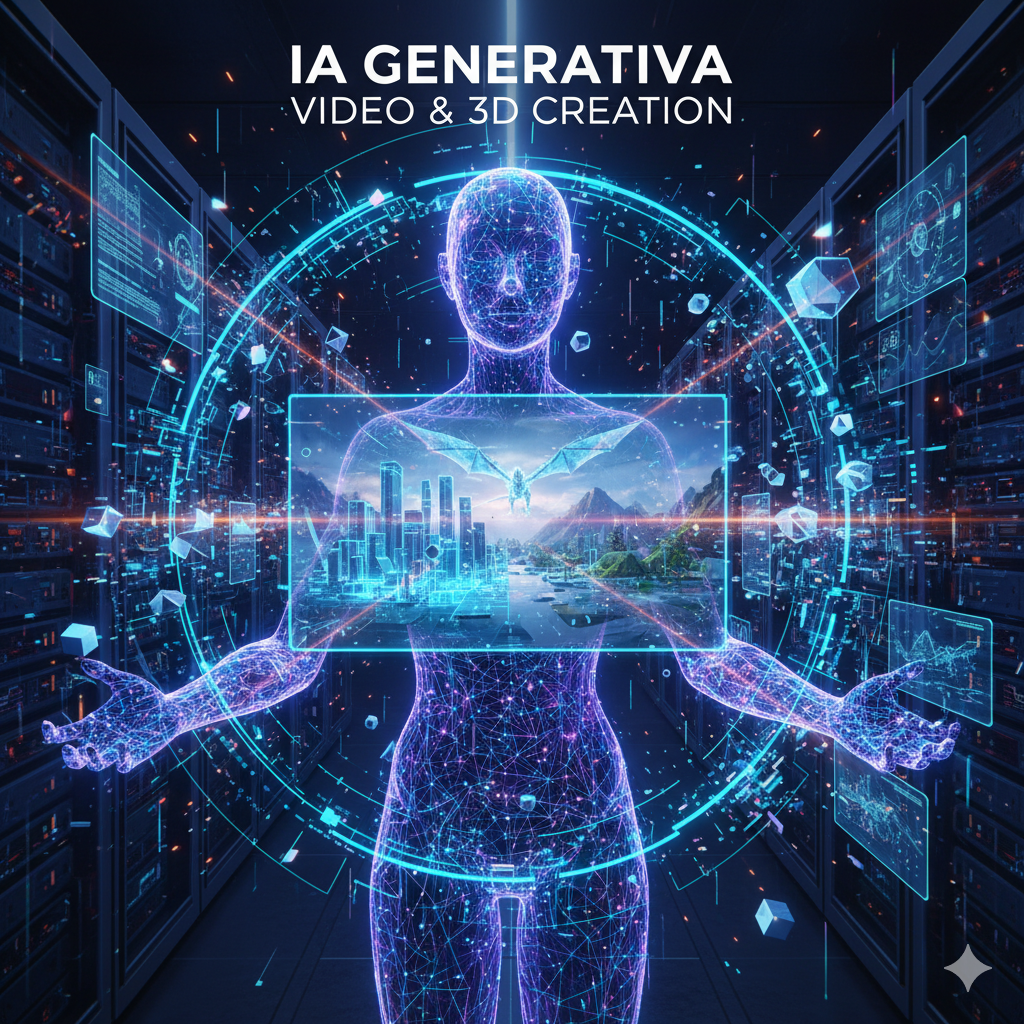Generative AI is redefining the digital creation landscape. Initially, it captivated users with text and images. Now, it pushes the boundaries toward animation and three-dimensionality. This evolution radically changes the way we produce complex visual content.
The Birth and Evolution of Generative AI Video
The idea of creating videos with AI has existed for some time, but the high-quality results we see today are a very recent phenomenon, specifically emerging from 2019-2022 onwards.
Origin: The Foundations of Generative AI
Generative AI possesses deep roots in Deep Learning. Crucially, the underlying technology began with the introduction of neural network architectures capable of creating new data:
- GANs (Generative Adversarial Networks): Born in 2014, these proved fundamental. Two neural networks compete; one generates content (the video), and the other discriminates its authenticity, thereby pushing quality to improve.
- Diffusion Models: Similarly, they appeared around 2014, and are the most widely used models today. They learn to eliminate random noise from data (a “noisy” video), consequently creating a hyper-realistic image or sequence.
These advancements, combined with the exponential growth of computational power (especially GPUs), ultimately laid the groundwork for video generation.
The Temporal Leap: From Images to Motion
The first concrete successes arrived with image generation (Text-to-Image), such as DALL-E and Midjourney, between 2021 and 2022. Researchers realized that a video is simply a coherent sequence of images over time.
- The first true generative video models (like Google’s DVD-GAN) date back to around 2019.
- However, the real qualitative leap forward, the one that made videos realistic and coherent, occurred between 2022 and 2023. Leading models demonstrated the capability to maintain physical and narrative coherence in longer clips.
In summary, Generative AI video developed from image generation models, subsequently adding the temporal dimension.
Beyond Video: The New Frontier of 3D
The creation of 3D content (models, environments, textures) represents the next major challenge for Generative AI. As a result, it renders 3D modeling no longer exclusive to experts.
From Text to the Three-Dimensional Model
Generative AI addresses the high complexity of 3D data. Specifically, a three-dimensional model requires not only form but also information on textures, lighting, and topology.
- The key concept involves transforming a simple text prompt (“a crystal dragon on a snowy mountain”) into a usable 3D file.
- The AI employs techniques that reconstruct spatial geometry. This enables the creation of assets for video games, animations, or virtual reality.
The Importance of Texture and Detail
A 3D model is incomplete without realistic texture. Furthermore, Generative AI excels at this.
- The algorithms can generate detailed texture maps.
- Thus, immediate realism is achieved.
- This significantly accelerates the workflow. An artist might spend hours or days. Conversely, the AI reduces the time to mere minutes.
The AI’s ability to simulate the physical world (light, motion, object coherence) constitutes the ultimate goal. This opens up unprecedented scenarios. Consequently, product prototyping, the creation of virtual worlds, or architectural visualization become almost instantaneous processes.


